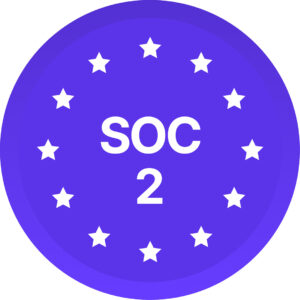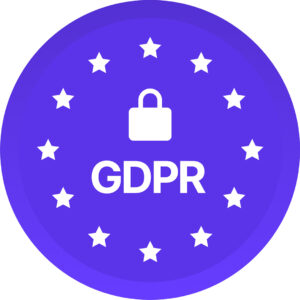Wellness programs in the workplace are now considered as a key approach for organizations that seek to promote a healthy, committed and productive workforce. These programs have many advantages, not only for the employee but also for the organization as a whole. In this article, we will explore why workplace wellness programs are important, what should be included in a program, how to implement it properly, and why DEI management is important in such programs.
Why are workplace wellness programs essential?
Workplace wellness programs are important for several reasons. First and foremost, they enhance the health and welfare of employees in the workplace. This is because through health checkups, fitness activities, counseling services, and dietary advice, the employees are well-placed to address their health needs. This can reduce the number of sick days, less stress and more contented employees.
Another important advantage is increased employee satisfaction and productivity. When the employees feel that their employer is concerned with their well-being, they are likely to be more productive and dedicated to their duties. Promoting wellness at the workplace can help prevent burnout and improve job satisfaction, thus increasing productivity and commitment.
Lowered medical expenses are a tangible economic advantage that comes with the use of wellness programs. Employees who are in good health will not be visiting the doctors often and therefore the insurance costs will be low thus saving the organization a lot of money.
Another benefit is that it is easier to attract and retain the best talents in the organization. Wellness programs are also an attractive feature for potential employees, which can help your company stand out from other employers. Also, current employees are more likely to remain loyal to an organization that cares for their welfare, thus, decreasing turnover.
Last but not least, wellness programs are used to foster a positive organizational culture. These initiatives create a culture of togetherness and demonstrate that the organization cares for its employees, thereby encouraging them to care for the organization as well.
Components of an effective employee wellness program
Health screenings and assessments
Preventive care services are a core component of any wellness program, including periodic health evaluations. These can assist in early detection of health risks and give the employees useful information about their health, so that they can change their ways.
Financial wellness
Money issues are one of the major causes of stress. It is possible to assist employees in the management of their financial health through offering them information and tools on how to handle their money.
Mental health and stress management
Providing services like counseling, stress management seminars, and mindfulness programs can be useful in preventing stress and promoting mental health among the workforce.
Fitness programs and nutrition
Promoting physical activity in the form of fitness programs and offering nutrition advice can greatly influence the health of employees. These initiatives encourage the right practices that are likely to enhance the general health of the people.
Inclusive culture
It is important to note that an effective wellness program should support an inclusive culture. This entails guaranteeing that all the employees, including those with a different status or a different position, can engage in the program and receive its benefits. Diversity helps to create a welcoming environment and a safety net in the workplace.
Tips for implementing a successful wellness program
Get strategic
A strategic approach is essential for the successful implementation of a wellness program. This entails identifying the needs of the employees, defining goals and objectives, and planning out the implementation of various programs.
Set clear and achievable goals
Setting clear and achievable goals goes a long way in determining the effectiveness of the wellness program. These goals should be specific, measurable, achievable, relevant and time bound (SMART).
Get middle-manager buy-in
Wellness programs are very important in organizations, and middle managers have a significant impact on the success of these programs. Their endorsement can encourage employees to get involved and ensure that wellness programs become part of the organizational culture. Here are some tips to secure their support:
- Clearly explain the benefits of the wellness program, extending beyond the employees themselves. Highlight the positive impacts on productivity, reduced absenteeism, and elevated team morale that contribute to the organization’s overall well-being.
- Engage middle managers from the inception phase of the wellness program development process. Actively seek their input on the most beneficial wellness activities for their teams and the most effective implementation strategies. This collaborative approach fosters a sense of ownership and increases their investment in the program’s success.
- Publicly acknowledge and recognize middle managers who actively champion and promote the wellness program. This positive reinforcement can serve as a powerful motivator, inspiring others to embrace and support the initiative within their respective teams.
- Empower middle managers by entrusting them with specific aspects of the wellness program. This further enhances their commitment and encourages them to enthusiastically advocate for the program among their team members.
- Maintain ongoing support through regular check-ins and feedback sessions. This proactive approach addresses any concerns that may arise and sustains their motivation throughout the program’s implementation and beyond.
Customize it and make it inclusive
To ensure the resounding success of your wellness program, customization and inclusivity are important. This means the program has to be tailored to the unique needs of your organization,in order to foster an environment where every employee feels welcomed and encouraged to participate. Here are some specific strategies to employ:
- Conduct comprehensive employee surveys to gather invaluable insights into their wellness needs and preferences.
- Curate a diverse range of activities and resources to cater to varying interests, abilities, and preferences.
- Recognize that employees’ schedules and commitments can vary greatly. Offer flexible timing options for wellness activities, accommodating diverse schedules and enabling widespread participation.
- Prioritize accessibility by ensuring that all wellness activities and resources are available to employees with disabilities.
- Cultivate an inclusive environment where every employee feels welcomed and encouraged to participate. Use inclusive language in all communications, reinforcing a sense of belonging and encouraging active engagement.
- Leverage technology to enhance customization and inclusivity. Platforms like Diversio can support your efforts by creating tailored surveys and analyzing employee engagement data, providing valuable insights into specific preferences and areas for improvement.
Create a communication plan for launching your program
Effective communication is the cornerstone of a successful wellness program launch. Begin by developing a deep understanding of your audience, tailoring your messages to resonate with different segments of your workforce. For example, senior management may require detailed information on the strategic benefits and return on investment (ROI), while frontline employees might be more interested in how the program directly impacts their daily lives and well-being.
- Use a diversified mix of communication channels to reach all employees effectively.
- Use email to send out regular updates and comprehensive information about the program.
- Create a dedicated wellness program page on the company intranet, serving as a central hub for resources, schedules, and frequently asked questions (FAQs).
- Place visually appealing posters and flyers in common areas, such as break rooms and notice boards, ensuring high visibility and awareness.
- Host informational sessions through meetings and webinars, providing a platform for employees to ask questions and gain a deeper understanding of the program.
- Leverage internal social media platforms to generate buzz and share inspirational success stories.
DEI management in wellness programs
Inclusivity should be the cornerstone of any wellness program. Organizations must ensure that their wellness initiatives are accessible to all employees, regardless of their background, role, or circumstances. For example, if a wellness program primarily consists of high-intensity fitness classes, employees with physical limitations or those who prefer different types of activities might feel excluded or frustrated. Offering a diverse array of wellness options addresses this concern, ensuring that everyone can find suitable activities that align with their needs and preferences.
Customization and real-time engagement data
Customizable wellness programs that leverage real-time engagement data can effectively address the unique needs of diverse employee populations. These programs provide valuable insights into employee preferences and participation levels, enabling data-driven adjustments that enhance inclusivity and effectiveness. Diversio’s platform excels in this area by quantifying employee experiences and providing leaders with the required tools to drive the best possible organizational culture. By comparing diversity, inclusion, equity, and engagement through an intersectional lens, Diversio empowers organizations to craft tailored wellness initiatives that resonate with every employee.
Quantifying wellness efforts in financial and social ROI
Measuring the financial and social impact of workplace wellness programs is crucial for demonstrating their value to stakeholders and justifying continued investment. By tracking metrics like healthcare cost savings, reduced absenteeism, and improved employee engagement, organizations can tangibly show how wellness initiatives positively affect overall business outcomes.
Diversio captures comprehensive data on employee engagement, motivation, job satisfaction, diversity and inclusion in hiring and promotion, cultural competence, communication, collaboration, leadership, and recognition. This data highlights the tangible benefits of wellness programs across the organization.
Wellness Programs with DEI in Mind: A Foundation for Success
Implementing workplace wellness is not just a smart strategy – it’s a transformative journey enriching employees’ lives and invigorating the entire company. These programs do not merely support well-being; they lay the foundation for a dynamic, resilient, and successful future. Imagine a workplace where health and productivity thrive together, where top talent is deeply engaged and loyal, and where a vibrant culture of positivity and inclusivity flourishes.
The Diversio Platform empowers human resources and wellness teams to develop tailored wellness initiatives resonating with every employee thereby driving an inclusive, high-performing workforce.

